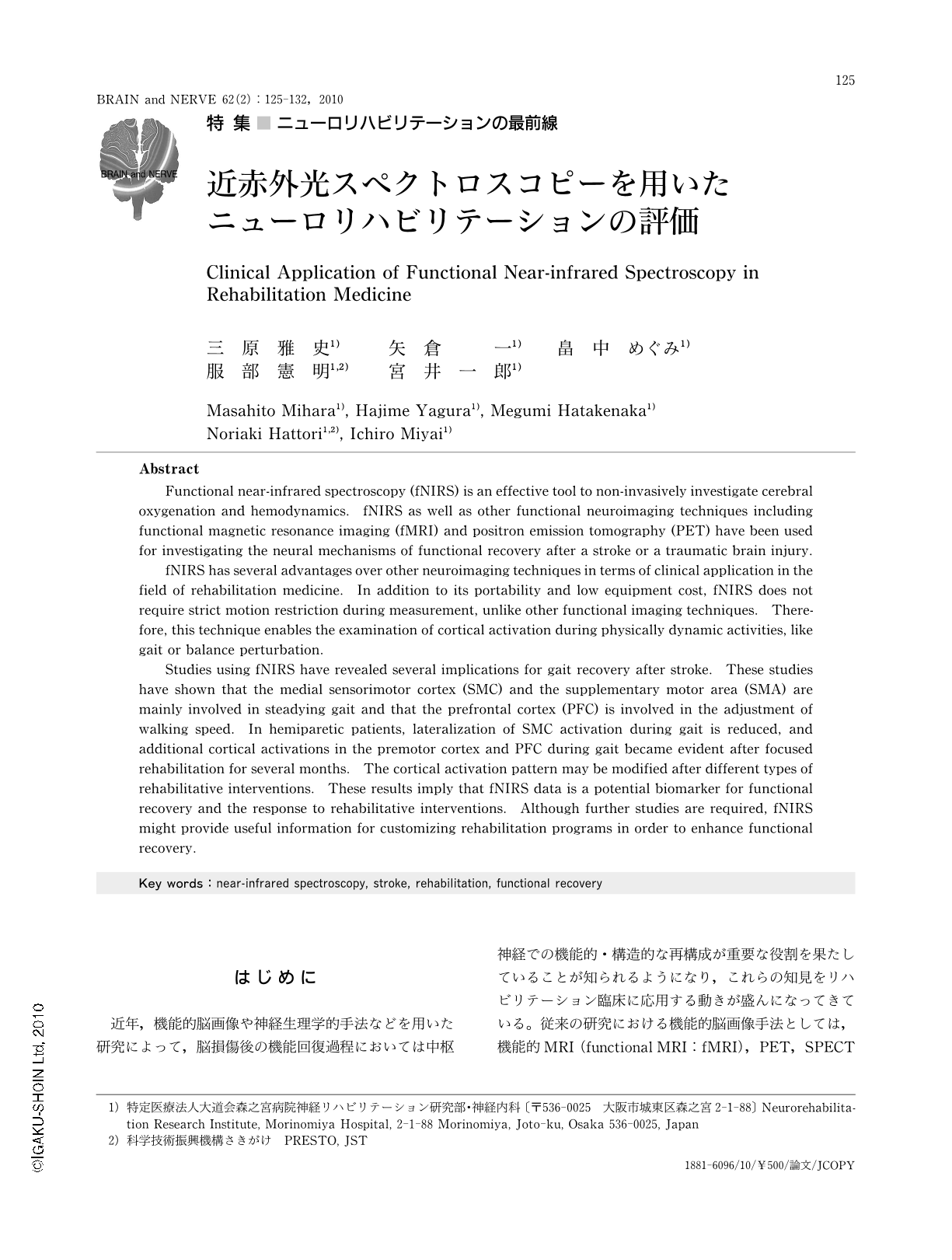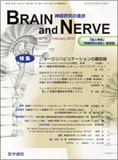Japanese
English
- 有料閲覧
- Abstract 文献概要
- 1ページ目 Look Inside
- 参考文献 Reference
はじめに
近年,機能的脳画像や神経生理学的手法などを用いた研究によって,脳損傷後の機能回復過程においては中枢神経での機能的・構造的な再構成が重要な役割を果たしていることが知られるようになり,これらの知見をリハビリテーション臨床に応用する動きが盛んになってきている。従来の研究における機能的脳画像手法としては,機能的MRI(functional MRI:fMRI),PET,SPECTなどの手法が主に用いられてきたが,いずれの手法も大がかりな専用の施設を必要とし,また基本的には撮影時に被験者の安静臥床が必要であることから,運動に関するタスクとしては上下肢の一部を動かす程度に制限されてしまうという問題があった。
本稿で紹介する近赤外光スペクトロスコピー(near-infrared spectroscopy:NIRS)は被験者に対する制約が少なく,装置が比較的小型で測定環境に対する自由度が高いことから,リハビリテーション分野における一般臨床場面での応用に適した機能的脳画像手法として注目されてきている。本稿では,NIRSを用いた脳機能測定の概要とリハビリテーション分野への応用例に関して述べる。
Abstract
Functional near-infrared spectroscopy (fNIRS) is an effective tool to non-invasively investigate cerebral oxygenation and hemodynamics. fNIRS as well as other functional neuroimaging techniques including functional magnetic resonance imaging (fMRI) and positron emission tomography (PET) have been used for investigating the neural mechanisms of functional recovery after a stroke or a traumatic brain injury.
fNIRS has several advantages over other neuroimaging techniques in terms of clinical application in the field of rehabilitation medicine. In addition to its portability and low equipment cost, fNIRS does not require strict motion restriction during measurement, unlike other functional imaging techniques. Therefore, this technique enables the examination of cortical activation during physically dynamic activities, like gait or balance perturbation.
Studies using fNIRS have revealed several implications for gait recovery after stroke. These studies have shown that the medial sensorimotor cortex (SMC) and the supplementary motor area (SMA) are mainly involved in steadying gait and that the prefrontal cortex (PFC) is involved in the adjustment of walking speed. In hemiparetic patients,lateralization of SMC activation during gait is reduced,and additional cortical activations in the premotor cortex and PFC during gait became evident after focused rehabilitation for several months. The cortical activation pattern may be modified after different types of rehabilitative interventions. These results imply that fNIRS data is a potential biomarker for functional recovery and the response to rehabilitative interventions. Although further studies are required,fNIRS might provide useful information for customizing rehabilitation programs in order to enhance functional recovery.

Copyright © 2010, Igaku-Shoin Ltd. All rights reserved.


